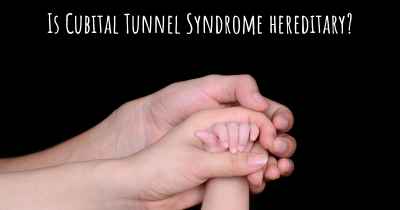Which advice would you give to someone who has just been diagnosed with Cubital Tunnel Syndrome?
See some advice from people with experience in Cubital Tunnel Syndrome to people who have just been diagnosed with Cubital Tunnel Syndrome

Cubital Tunnel Syndrome: Advice for Newly Diagnosed Patients
Receiving a diagnosis of Cubital Tunnel Syndrome can be overwhelming and raise numerous questions about the condition and its management. This guide aims to provide you with valuable advice and information to help you navigate this new chapter in your life.
Understanding Cubital Tunnel Syndrome
Cubital Tunnel Syndrome is a condition that affects the ulnar nerve, which runs along the inner side of your elbow. It occurs when this nerve becomes compressed or irritated, leading to symptoms such as pain, tingling, numbness, and weakness in the hand and arm.
Consult with a Healthcare Professional
Upon receiving your diagnosis, it is crucial to consult with a healthcare professional, such as a doctor or a specialist in orthopedics or neurology. They will provide you with personalized advice and treatment options based on the severity of your condition.
Educate Yourself
Take the time to educate yourself about Cubital Tunnel Syndrome. Understanding the causes, symptoms, and treatment options will empower you to make informed decisions about your health. Reliable sources such as medical websites, books, and reputable healthcare organizations can provide valuable information.
Follow the Recommended Treatment Plan
Your healthcare professional will develop a treatment plan tailored to your specific needs. This plan may include a combination of non-surgical approaches, such as:
- Resting and avoiding activities that aggravate your symptoms
- Using a splint or brace to keep your elbow in a neutral position
- Physical therapy exercises to strengthen the muscles around the elbow
- Taking over-the-counter pain relievers to manage discomfort
If conservative measures do not provide sufficient relief, your doctor may discuss surgical options with you. It is important to carefully consider their recommendations and ask any questions you may have.
Modify Your Daily Activities
Adapting your daily activities can help alleviate symptoms and prevent further aggravation of your condition. Consider the following:
- Avoid prolonged periods of elbow flexion or pressure on the ulnar nerve
- Use ergonomic tools and equipment that minimize strain on your elbow
- Take regular breaks during repetitive tasks to rest your arm
- Practice good posture to reduce strain on your neck and shoulders
Manage Pain and Discomfort
While undergoing treatment, you may experience pain and discomfort. Here are some strategies to manage these symptoms:
- Apply ice packs or use cold therapy to reduce inflammation
- Practice gentle stretching exercises recommended by your healthcare professional
- Consider alternative therapies such as acupuncture or transcutaneous electrical nerve stimulation (TENS)
- Discuss pain management options with your doctor, including prescribed medications if necessary
Seek Emotional Support
Dealing with a chronic condition like Cubital Tunnel Syndrome can be emotionally challenging. It is important to seek emotional support from friends, family, or support groups. Sharing your experiences and concerns with others who understand can provide comfort and valuable insights.
Monitor Your Progress
Keep track of your symptoms and progress throughout your treatment. Note any changes, improvements, or worsening of symptoms. This information will be helpful during follow-up appointments with your healthcare professional, enabling them to adjust your treatment plan accordingly.
Stay Positive and Patient
Managing Cubital Tunnel Syndrome may require time and patience. It is essential to maintain a positive mindset and remain patient throughout the treatment process. Remember that everyone's journey is unique, and with proper care and management, you can find relief and improve your quality of life.
Conclusion
Receiving a diagnosis of Cubital Tunnel Syndrome can be overwhelming, but with the right knowledge and support, you can effectively manage the condition. By following the advice provided, consulting with healthcare professionals, and making necessary lifestyle modifications, you can take control of your health and work towards a better future.








